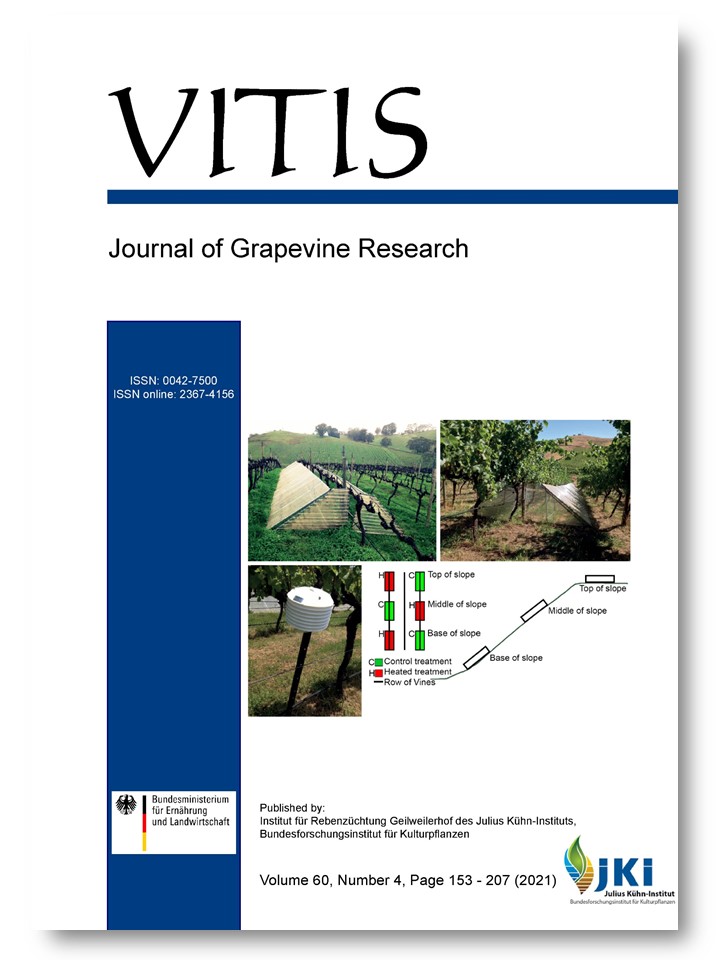Analysis of changes in viticultural climatic indices in northwestern and western Iran
DOI:
https://doi.org/10.5073/vitis.2021.60.179-187Abstract
Climate and climatic variables are very important factors in grape growth. Usually, temperature variables (maximum, average and minimum), as well as pre-
cipitation variables (annual, monthly and daily), are used to determine the regional climate and to study the type and amount of climate change. Most of the viticultural climatic indices presented by researchers have been using the above variables. Northwestern and western regions of Iran are considered as the most important areas of grape cultivation with different climatic conditions in different parts that have led to the cultivation of grape cultivars. In this study, five temperature indices (Huglin, latitude-temperature, night cooling, temperature variability and Winkler) and two precipitation indices were investigated based on De Martonne and hydrothermal drought indices. Then, they were analyzed by Mann-Kendall method and Sen's slope estimator index. The studies showed significant positive trends in Huglin, Winkler, night cooling and latitude-temperature indices, while the temperature variability index is significant only in a few stations. On the other hand, the indices related to drought and hydrothermal show no trend. However, some southern stations in the region showed a different trend in some indices. As a result, the trend of changes in temperature indices can lead to the expansion of cultivation of grape cultivars in the coming years, although the limitation of water resources will be a negative factor.
Downloads
Published
Issue
Section
License
Copyright (c) 2021 The Author(s)

This work is licensed under a Creative Commons Attribution 4.0 International License.
The content of VITIS is published under a Creative Commons Attribution 4.0 license. Any user is free to share and adapt (remix, transform, build upon) the content as long as the original publication is attributed (authors, title, year, journal, issue, pages) and any changes to the original are clearly labeled. We do not prohibit or charge a fee for reuse of published content. The use of general descriptive names, trade names, trademarks, and so forth in any publication herein, even if not specifically indicated, does not imply that these names are not protected by the relevant laws and regulations. The submitting author agrees to these terms on behalf of all co-authors when submitting a manuscript. Please be aware that this license cannot be revoked. All authors retain the copyright on their work and are able to enter into separate, additional contractual arrangements.



